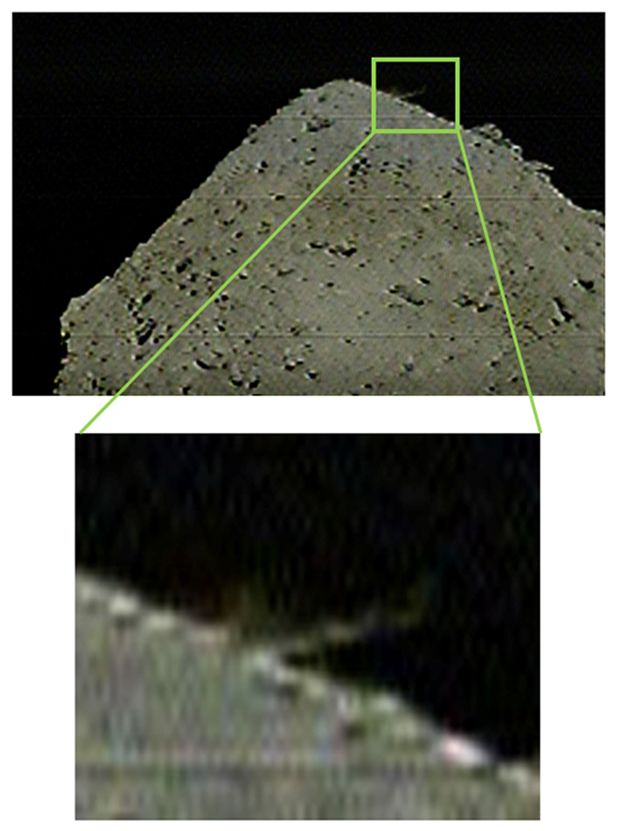The Japanese Hayabusa-2 spacecraft is thought to have detonated an explosive charge on the asteroid it is exploring.
The idea was to create an artificial crater on the object known as Ryugu.
If this is successful – and the early indications are positive – the probe will later return to gather samples from the gouged depression.
Scientists believe these samples could help them better understand how Earth and the other planets were formed in the early Solar System.
 I
I
The explosive device, called the Small Carry-on Impactor (SCI), was released from Hayabusa-2 on Friday. The SCI, a 14kg conical container, was packed with plastic explosive intended to punch a 10m-wide hole in the asteroid.
Because of the debris that would have been thrown up in this event, Hayabusa-2 manoeuvred itself before the detonation to the far side of 800m-wide Ryugu – out of harm’s way and out of sight.
But the probe left a small camera behind called DCAM3 to observe the explosion. Images returned to Earth later on Friday appeared to show a spray of debris emerging from the limb of the asteroid, indicating the experiment to excavate a crater very probably worked.



